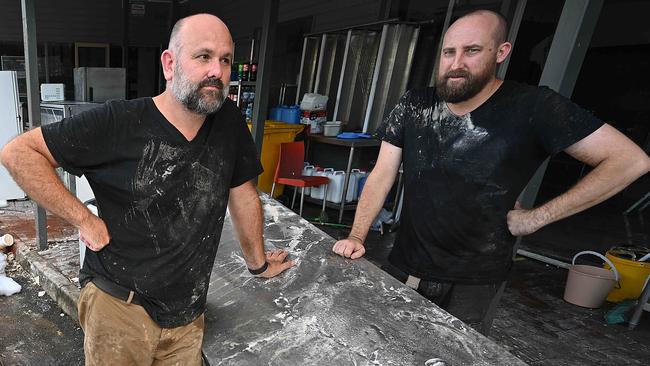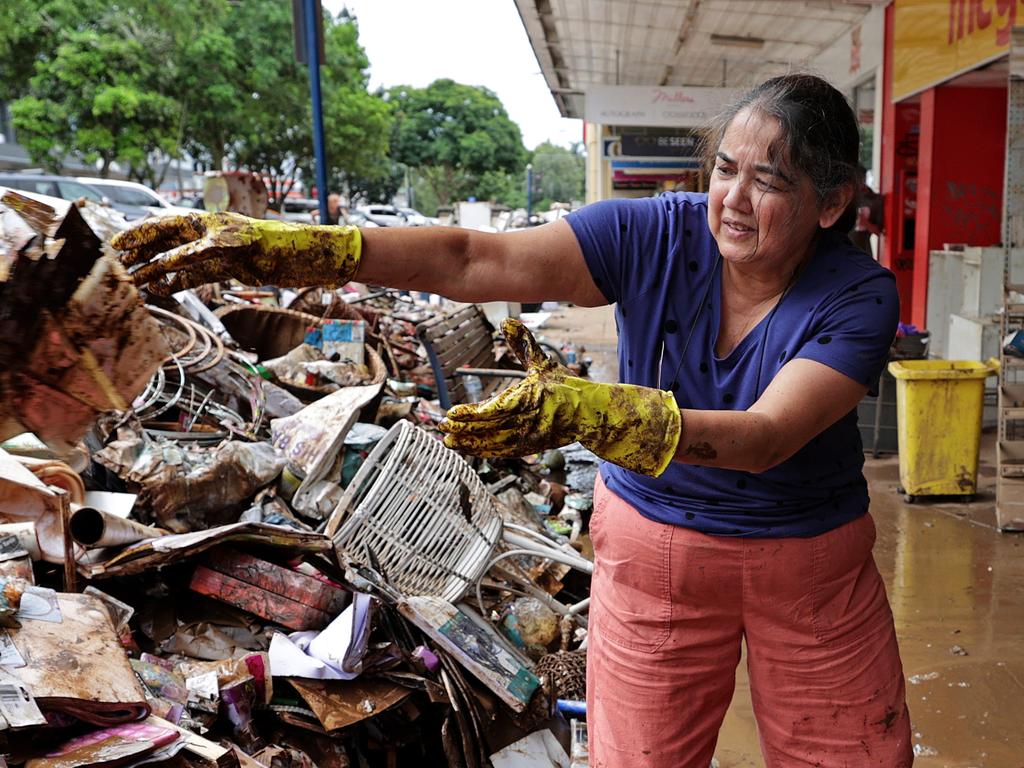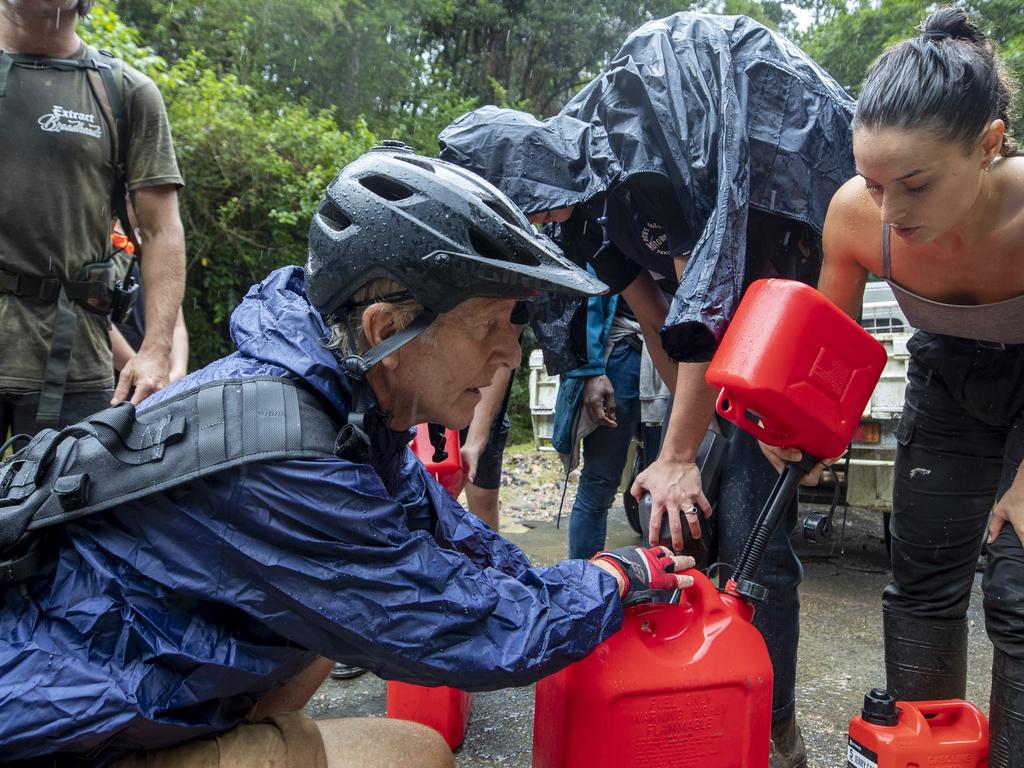After the disaster: rebuild, retreat or resilience?
For the second time in 11 years, Brisbane businessman Scott Geiszler had his thriving pizzeria wrecked by flooding.

For the second time in 11 years, Brisbane businessman Scott Geiszler had his thriving pizzeria wrecked by flooding and if there is a definition of insanity he suspects it could be to rebuild on the same spot near the river.
As the waters continued to subside on Friday, exposing a mud-encrusted wasteland across dozens of suburbs in the Queensland capital, the Pizza Capers chain co-founder was not alone in wondering how Australia can get off the merry-go-round of like-for-like reconstruction after natural disasters.
“I thought 2011 was a one-off event,” Mr Geiszler said, taking a break from the backbreaking job of clearing out the trashed Jindalee eatery in the city’s hard-hit west. “Saturday night, we went home thinking there’d be no chance of flooding, that everything was fine. Sunday morning the water was coming up the driveway and the best advice was that we’d get about 10cm through the shop.
“We put everything above that height. Sunday afternoon we had 2.1m of water through here.”
Some of the 15,000-plus homes and properties that flooded in Brisbane and surrounds will be patched up at eye-watering expense after going under not only in 2011 and again this week, but also in 1974. The frequency of citywide floods is increasing alongside the damage bill.
The Insurance Council of Australia reported on Friday 67,537 flood-related claims had been lodged to date in Queensland and NSW, at an estimated cost of $1bn. Just on 82 per cent of them were for domestic property damage.
But the practice of replacing ruined carpet, sodden particleboard cabinets and plasterboard wall lining with more of the same is being challenged as insurance assessors crisscross a crisis zone from Queensland’s Fraser Coast, north of Brisbane, to southern NSW.
National Recovery and Resilience Agency boss Shane Stone, a former chief minister of the Northern Territory, called for a “national conversation” to shift the balance from responding to natural disasters – which no one was better at than Australians – to mitigating and preventing them.
“The first thing is for people to embrace and accept that we build it back better, be it homes or infrastructure. You can’t just put things back how they were, though that is certainly cheaper and often quicker,” he told The Weekend Australian. “Resilience to the next flood or cyclone or bushfire is simply not there … that has to be addressed.”
One option is property buybacks in flood-prone areas. Brisbane City Council spent $58m acquiring 112 home lots in the decade to 2016, but after this week that could be a drop in the bucket.
One of the country’s biggest general insurers, Brisbane-based Suncorp Group, heavily exposed to the east coast floods, is topping up $50,000-plus property damage settlements with a $10,000 subsidy to encourage people to rebuild with resilience in mind.
Small changes could make a big difference, CEO Steve Johnston said. Replacing flood-damaged carpet with polished concrete or tiles was an easy fix, yet often overlooked in the rush to make repairs. When waterlogged wall sheeting was swapped out, ankle-height power outlets should be set higher.
The message, though, was not cutting through the fog of emotion and exhaustion in Mr Geiszler’s flood-struck corner of Brisbane. A few doors along from the shuttered pizzeria, twin sisters Linh and Tran Quach, 32, had workmen on site to put everything back as it was before the water surged chest-high through their gleaming new dental practice. The two dentists plan to have the doors open again by the end of the month.
Gym owners Andrew Little and Zane Pollard were trying to salvage what they could. “It is what it is, we’ve just got to rip in and get it going again,” Mr Pollard said.
For old hands such as Mr Geiszler, who cashed out his interest in the 120-store chain to concentrate on the Jindalee outlet, two floods were too much. “I was on the phone with the insurance broker this morning and he said to expect a tripling of the flood premium. It just gets to the point that you have to question it and consider moving above the flood line. We’ve got a loyal following, hopefully they’d come with us. I don’t know yet.”
Additional reporting: Mackenzie Scott,
Lydia Lynch





To join the conversation, please log in. Don't have an account? Register
Join the conversation, you are commenting as Logout